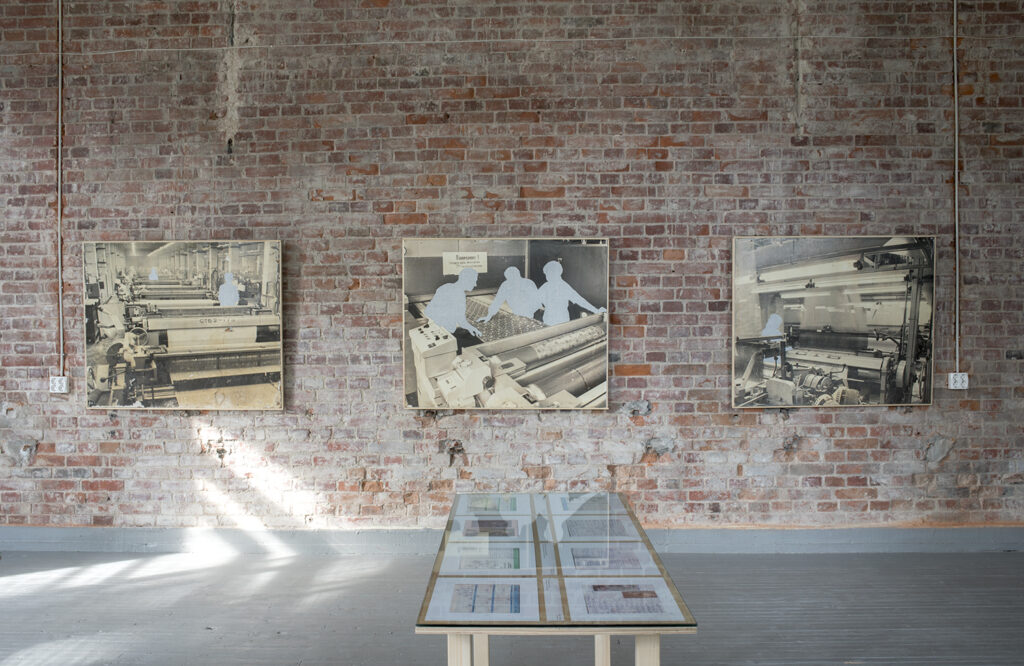
Maria Kapajeva (1976) is an artist mainly focusing on peripheral histories and the position of women in various cultures. In her work Kapajeva uses photography, video and found images from archives and the Internet.
In her first solo exhibition “Call me early” (2009) Kapajeva exhibited photos of people she had photographed in the liminal state between being asleep and awake. In these black and white photos, images of people arise as if from a deep dark dream. With the show “Transformation” (2010) the artist continued with another series of portraits titled “One Month”, an anthropological study on the impact of time and space on a person, depicting students from the UK in India.
In her solo exhibition “Interiors” (2015) Kapajeva exhibited photos of women found on various dating sites, whose manner of self-representation was thoroughly stereotypical. Even though these half-naked profile pictures do serve the purpose of grabbing attention, the women in Kapajeva’s work have blended into the interior. Another of her exhibitions, “I just knew … She’s been with me ever since” (2017) was also dedicated to stereotypical images of women. One of the art works in the show, “I Am Usual Woman” depicted a patchwork quilt with a wedding ring motif, a popular wedding gift for women. The quilt displays photos from websites with recommendations in which poses a woman should be photographed in order to attract a man. A similar theme was explored in “Test Shooting” (2016), a show with a video work of the same title at its centre, where a male model follows instructions from dating sites on how to pose in an attractive manner.
Among Kapajeva’s most extensive exhibitions is “Unistus helge, veel ebaselge / Dream is Wonderful, Yet Unclear” (2017, curated by Liisa Kaljula), dedicated to the Kreenholm textile factory, the most prominent company in the city of Narva, that in its heyday employed around 12 000 people, most of them women. In preparation for the show, Kapajeva conducted interviews with employees of Kreenholm and collected photographs and memorabilia from their family archives. The dedication of these women to their work and the workplace seems like a wonderful dream, in stark contrast with today’s capitalist society. Developing the project further, she also published a book under the same title (published by Milda Books, Latvia, 2020).
Kapajeva worked with family archives and found images in her self-published book “You can call him another man” (2018), in which she built up a narrative based on her father’s photos and undeveloped films, creating an opportunity to re-read his past.
Her solo exhibition “When the World Blows Up, I Hope to Go Down Dancing” (2020, curated by Siim Preiman) looked at the expectations society sets for women and the social invisibility that women experience after turning 40. For example, her installation “OR OTHER” (2020) consisting of a neon sign and two framed photographs focuses on Freud’s Madonna-whore complex that claims women are seen either as saints or as sinners. The artist also asks what other feminine roles are present in society today.
Maria Kapajeva (1976) graduated from the School of Economics and Business Administration at the University of Tartu (BA, 2000), the University for the Creative Arts (BA, 2009; PGC 2015), and the University of Westminster (MA, 2013). She has received the British Council PM12 Award (2008, 2010) and the award of the A Woman’s Work project by Creative Europe Programme of the EU with Gallery of Photography Ireland (2019). In 2025, she was awared with Estonian Cultural Endowment annual prize. Kapajeva has taken part in the Riga Biennial of Contemporary Art RIBOCA (2018, curated by Katerina Gregos). Her works have been exhibited in residencies in Gdansk, Narva, Kaunas, Teheran, London, Štúrovo and Helsinki. Kapajeva’s works belong to the collections of Kiasma and Fotomuseum Winterthur. Since 2021 she’s the doctoral candidate at the Estonian Academy of Arts.